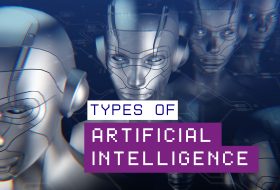The 2024 Nobel Prize in Physics laureates, John H. Hopfield and Geoffrey E. Hilton, have significantly shaped modern AI with their work “foundational discoveries and inventions that enable machine learning.”. Their work is impacting numerous other fields and has significantly set the stage for technologies embedded in our daily lives. This further implicates how AI is going to evolve further and herald transformative changes in the technological arena and beyond. Artificial intelligence has long evolved, inspired by the human mind, from perceptrons to neural networks.
With the increasing proliferation of data, enhanced algorithms, and greater computing power, AI has laid the foundation for technological advancements in leaps and bounds, which has also brought about groundbreaking advancements in deep learning. Deep learning tops as one of the fastest-growing areas of data science, driving numerous industries and businesses. Often used interchangeably with machine learning algorithms, however, deep learning with its own specific features is making waves of transition and development, powering several other industries. This blog is a detailed analysis of the evolution of deep learning from its foundation and explores the future prospects by examining technological trends.
A Comprehensive Look Into Deep Learning
Deep learning can be defined as a specific area of machine learning that deploys neural networks with numerous layers for analyzing and interpreting complex data patterns. The name deep – derives from its characteristics of having many layers. The deep learning algorithms have layers arranged in hierarchical order of increasing abstraction and complexity. The complex algorithms enable greater inputs and higher predictive accuracy.
The neural networks that deep learning employs are a simulation of the human brain structure that has interconnected nodes for processing information. Deep learning models are developed to automatically learn features from raw data. Hence, there is no need for human intervention or manual feature extraction. These models perform excellent tasks, including natural language processing, image and speech recognition, and self-driving automobiles. One of the finest examples is where computer vision powered by deep learning is aiding advancements in machine learning applications and image processing.
With multiple layers, the principle of hierarchical feature learning outlines the operating mechanism of deep learning. The network’s lower layers are tasked with learning simple features, while the higher layers amalgamate the simpler features to identify more complex patterns. This ability enables deep learning to attain greater accuracy across numerous applications, like machine learning for image classification and deep learning for image segmentation.
The Architecture of Deep Learning: Artificial Neural Networks
Artificial Neural Networks (ANN) is the architecture behind deep learning. This subset of machine learning uses neural networks, including recurrent and convolutional neural networks, to process and analyze diverse forms of data. It functions by simulating the way the human brain functions, allowing computers to learn from colossal amounts of data. Let us outline the structure and functions of neural networks to get into the depth of deep learning. ANNs (Artificial Neural Networks) are developed to identify patterns and draw conclusions and decisions foundational to the data fed to them.
- Structure of ANN: ANN constitutes interconnected neurons or nodes. Each node/neuron is fed with input, and the nodes process it and transmit the output to the next layer.
- Function: ANNs imitate the functioning of the biological neural networks of the human brain. It uses activation functions to decide on the activation of a neuron based on the input it attains.
- Process: ANNs are trained using labeled data. A backpropagation process is tasked with adjusting the weights of connections between neurons.
- Application: ANNs are largely used in Natural Language Processing (NLP), image and speech recognition, deep neural networks, and deep belief networks.
Types of Deep Learning Architecture
There are different types of deep learning architecture, each designed and developed to process different forms of data, attuned to a specific task. The architecture includes:
Convolutional Neural Networks (CNNs): Also known as the powerhouse for image processing, CNNs are a class of deep learning models essentially designed for image processing. This model is efficient for tasks that require an understanding of spatial hierarchies in images. CNNs are specialized for handling grid-like data. It employs convolutional layers for the automatic detection of features. The use applications of CNNs include:
- Image classification
- Object detection
- Image segmentation
- Medical image analysis
Recurrent Neural Networks (RNNs): Particularly designed for processing sequential data, RNNs have the potential to process input sequences of different lengths, which makes them unique and versatile for different applications. It consists of loops that enable the transportation of information from one step to another. RNNs also maintain a concealed state that extracts information from the earlier inputs, which helps them to remember context over time. Some RNNs’ common use cases and applications are:
- Language Modeling
- Text generation
- Video analysis
- Machine Translation
Long Short-Term Memory (LSTM) Networks: The LSTM networks are specifically RNN-designed networks for taming the limitations of standard RNNs, particularly with the challenges of vanishing gradients. This issue arises when employing gradients becomes too small, leading to difficulty in generating effective learning over long sequences. It introduces a more complex setting featuring memory cells for storing information over a long duration. It also has three gates—Input, Output, and Forget—designed to control the information flow. These gates enable the LSMT network to reserve relevant information for longer periods and to forget irrelevant data, which further enhances efficiency. LSMT enables better task performances that demand long-term memory and improve the capacity for networks to model complex sequences. The most prominent use cases include:
- Speech recognition
- Text generation
- Time series forecasting
Generative Adversarial Networks (GANs): It is one of the disruptive approaches that surfaced in machine learning, which constitutes two neural networks that compete against each other. They are the generator and the discriminator. GAN architecture is capable of producing synthetic data resembling real data. The generator neural network is tasked with creating a copy of the data samples, and the discriminator neural network is responsible for assessing the counterfeit data and comparing it against real data. Both networks are trained simultaneously, with the generator network aiming to enhance its capacity to develop realistic data and the discriminator network working toward enhancing its performance at deciphering real data from fake data. Some prominent use cases of GANs include:
- Image synthesis
- Super-resolution imaging
- Style transfer
Deep Learning Applications Across Industries
Now that we have dissected the architecture and mechanism behind deep learning, let us identify some of the popular use cases of deep learning across industries.
Healthcare: Medical image analysis has been significantly improved with the advent of deep learning. It has proven a substantial contribution to the detection of tumors in radiology images. Deep learning also helps in drug discovery through its advanced prediction of molecular behaviors and interactions.
Finance: The finance sector has benefitted on a large scale with deep learning algorithms and image processing techniques applied in fraud detection and risk management. Their capacity to analyze and predict market trends is highly valuable for stock trades.
Entertainment: One of the biggest beneficiaries of deep learning is the entertainment industry. Streaming services are able to generate content recommendations based on the preferences and tastes of their users. Video game development has also seen massive advancements with the possibility of simulating real environments and characters into the game.
Automotive: From object detection to recognition, deep learning has been largely useful in enhancing safety and navigation, further enhancing autonomous driving automobiles.
Retail: Deep learning has revolutionized businesses in retail by enabling them with advanced recommendation systems and offering individualized marketing. Companies are capable of harnessing efficient inventory management and optimizing the supply chain through deep learning predictions.
Agriculture: Agricultural activities like yield prediction and crop monitoring have been largely using deep learning, leading to better crop management, pest detection, and diagnosis of plant diseases.
Natural Language Processing (NLP): NLP tasks like language translation and sentiment analysis have been largely made possible by the advancements in deep learning models. With deep learning models, chatbots and virtual assistants have seen drastic transformation, becoming more accurate, responsive and human-like.
Unlocking the Future of AI with Deep Learning
The raging advancements of deep learning are enabling AI applications and technologies used across all industries to garner growth and gain a competitive edge. From improving business automation to enhancing and expanding almost every field, AI will continue to shape and redefine industries and humanity. AI is poised to be the driving force for every emerging technology from IoT to big data to robotics to generative AI. Some trends are inevitable in the future with the efforts to bring about more superior AI. Some of the emerging trends include
- Transfer Learning
- Few-Shot Learning
- Attention Mechanisms and Transformers
- Interpretable AI
- Edge AI
With the massive expansion comes the risks associated with AI technologies. The world must look out for and be ready to combat negative developments that AI also ushers in. Some of the prominent cases are deepfakes and misinformation, automated weapons, data privacy and threats, human biases, and job losses. That said, more stringent regulation will be coupled with the increasing adoption of AI.










